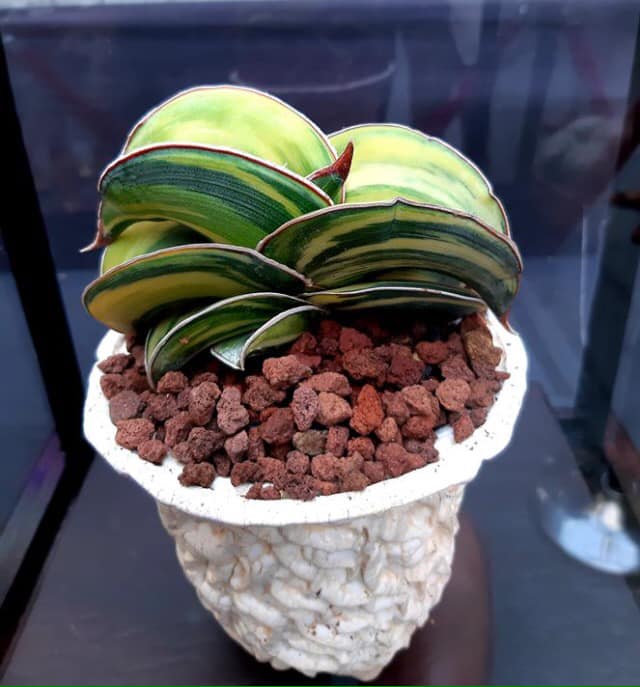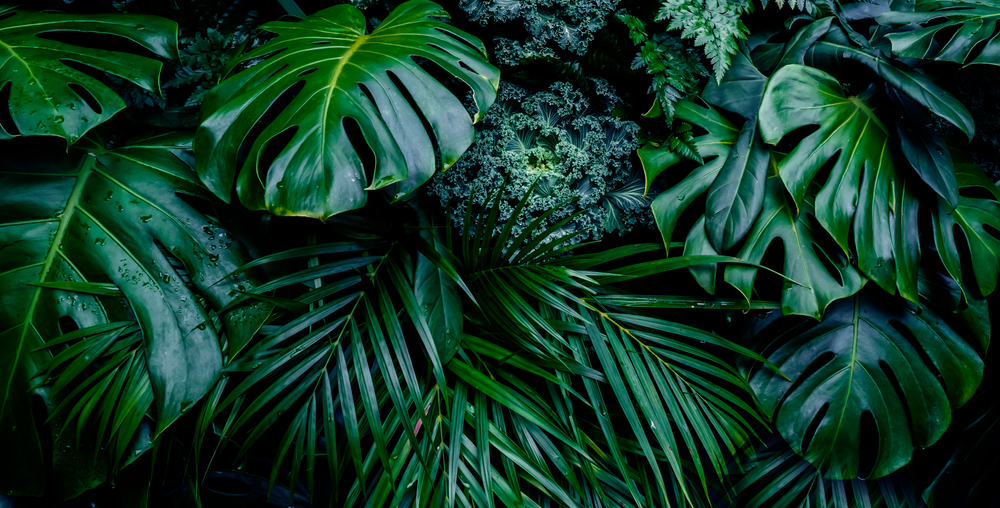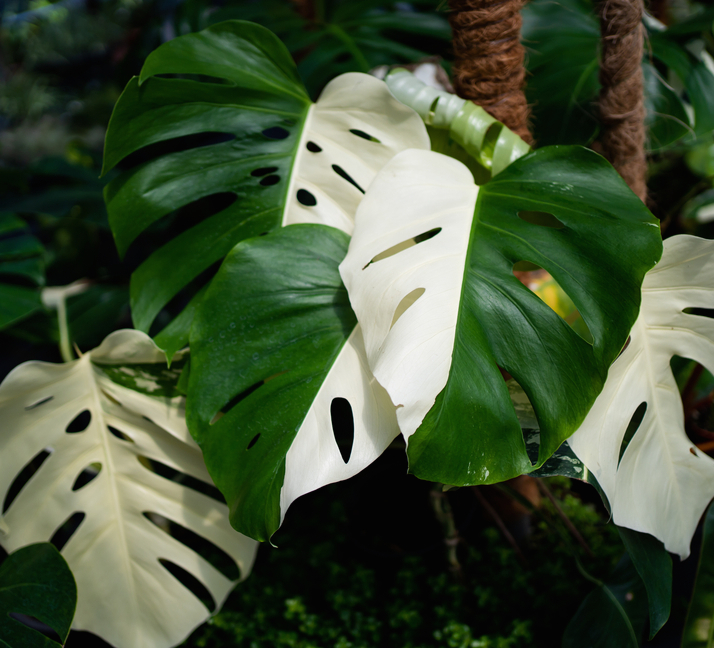Why this plantito refuses to sell his plant, even when offered 10 million pesos
It took horticulturist Boyet Ganigan 10 years to produce the BG regale sanseviera hybrid. He has received multiple offers to sell, all of which he refused. He said, “The plant deserves to stay in the Philippines.”
Plants have become a growing trend in the country since Filipinos have been stuck inside their homes in quarantine since March.
With activities restricted, people had to find ways to occupy their time when they weren’t working from home. In addition, plants have been scientifically proven to improve one’s mental and physical health including relieving stress and anxiety.
Even those who were not into plants before have become certified plantitas and plantitos.
Celebrities such as Jinkee Pacquiao and Aubrey Miles have showcased their prized plants on social media. Pacquiao’s variegated alocasia plant or “elephant ear” plant was estimated to cost around P20,000 or more; while Miles shared that her variegated billietiae and variegated adansonii plants cost her at least P100,000 to P300,000.
A very rare succulent plant holds the title for the most expensive plant in the country. Called sansevieria rorida or BG regale sanseviera hybrid, it’s named after its owner Boyet Ganigan, secretary of the Philippine Horticulture Society.

Ganigan is well-known in the plant community for propagating hybrid plants. He is also the man behind the Facebook page Arid and Aroids.
The plant made its debut last year at numerous plant festivals and was priced at P1 million. But offers for this one-of-a-kind plant have reached up to P10 million.
It took Ganigan 10 years to produce the hybrid via mutation breeding. The stem was originally taken from Africa and was exposed to chemicals and radiation. Although the offers for this plant have reached exorbitant amounts, Ganigan didn’t sell his precious hybrid and was quoted in several interviews, saying “the plant deserves to stay in the Philippines.”
Watch Ganigan’s Arid and Aroids Youtube channel here.

Why are some plants so expensive?
Factors that make plants expensive include “the leaf structure, unique features like variegation, colors, difficulty of propagation, slow growth, rarity, or if it’s imported,” Gerard Dy of Plant Papa PH shares with PhilSTAR Life.
Uno of Green Hub PH adds that the price for rare plants depends on the international online market value. “The rare plant market values are highly volatile and constantly changing. It really depends on the current demand or ‘craze’ for a certain variety in a specific period of time.”
Another reason for the spike in price is rarity.
“If a plant has only two copies in your garden, you won’t want to sell it unless the price is right—or you might not sell at all,” says “The Last Fairy” of Hardin ng Huling Diwata.
What are the most expensive plants to date?
Dy says the most expensive plants today are the aroids, which include many houseplants such as the ZZ plants, pothos, aglaonemas, monsteras, philodendrons, and rare alocasias.
Before the pandemic, he was able to shop for these plants in Quezon City. “The anthurrium sold for P500, but now it costs around P5,000. The monstera deliciosa used to cost P800 to P1,000, but now they sell it at P3,000 to P5,000 per leaf! The Thai constellation or the variegated abo monstera was sold for less than P5,000, but now it can cost you P15,000 to P20,000,” says Dy.
Depending on the size, root system, number of leaves and holes formation, prices for monsteras can go up. The extra large ones, standing at 24 inches and over, are the most expensive.
Add the variation and the fenestration or the holes formation on the leaves and the price goes up even more. The more fenestration, the more gorgeous and expensive the plant gets.
“Philodendrons are wide in variety, but the favorites are the billietiae, verucossum, melandochrysum and hastatum, to name a few. Before, the mature plants cost about P3,000 but now the juvenile ones cost P5,000. And the simple golden pothos were only P50, but now I’m surprised that they are selling these for P800 to P1,000, while a small pot of the pothos Njoy is now sold for P1,500,” he adds.
Other plants that have appreciated in value are:
- Alocasia macrorrhiza or the giant taro is now priced at P20,000 or more.
- Monstera borsigiana albo variegated, prices are from P40,000 to P150,000 (depending on the number of leaves).
- Philondendron billietiae variegated, price starts at P80,000 to P280,000.
- Monstera adansonii variegated, price ranges from P100,000 to P300,000.
- Philodendron spiritus sancti, price starts at P350,000 to P600,000.
- Blue cycad family, prices start at P200,000 to P3 million.
- BG regale sanseviera hybrid offers have reached P10 million.
-

Because of high demand for rare plants, poachers are taking endangered plants from protected forests.
Understanding the demand
It’s hard for some people to understand why collectors are willing to shell out big sums of money for plants. “Normally, collecting plants is done gradually. Beginners usually start with the cheaper ones before they start investing in the pricier ones. In fact, some plants have been likened to designer bags and jewelry,” shares The Last Fairy.
“Not everyone will understand why these plants are so expensive, only those who appreciate and collect them will,” admits Uno. “We noticed that new collectors want to invest immediately in bigger and more expensive varieties compared to those who’ve been collecting plants for years. Nowadays, people view rare plants as good investment because prices constantly go up.”
View this post on InstagramVariegated Philodendron Black Cardinal Php 45,000
A post shared by GreenHub PH (@greenhubph) on
“(Plant collecting) has been in the industry ever since, it just so happens that collectors are buying more nowadays. And with the emerging collectors, they will eventually buy expensive ones, too,” says The Last Fairy.
“It’s hard to keep up with the demand for these rare plants, since the only way to propagate them is through cutting, which takes three to six months to be established and ready for release,” adds Uno.
Take, for example, the Monstera borsigiana albo or albo. The reason why albos are so expensive is they take a great amount of time to grow and propagate due to their variegation or the appearance of differently colored zones in the leaves and stems.

Taking care of expensive plants
Plants entail a lot of responsibility and that includes knowing where sellers sourced these plants.
In September, there were a slew of reports of plant poaching. In order to meet the rising demand for rare plants, some traders have resorted to taking rare, vulnerable and endangered species of plants from protected forests and even public parks.
In contrast, legitimate sellers have their own nurseries to propagate plants.
Experts recommend that before purchasing, buyers must conduct proper research. You can also ask your gardener or the seller what kind of plant best fits your lifestyle.
Know how much sunlight and water it requires, the kind of soil and climate it needs to ensure optimum growth. Take note that plants are sensitive to change, and are slow to adapt to new environments. This includes transferring them from one pot to another.
Other ways to take care of plants include trimming the dead ends or pruning, wiping the leaves as a layer of dust can block out the sunlight.
Remember that just like having a pet, planting requires commitment. Buy plants that you can actually take care of instead of buying and then letting them go to waste—and it’s a waste of money too.
Buy only what you can afford and not because it is popular or the “it” plant of the season.
Banner photo from the Facebook page Legazpi Cactus And Succulent Corner


